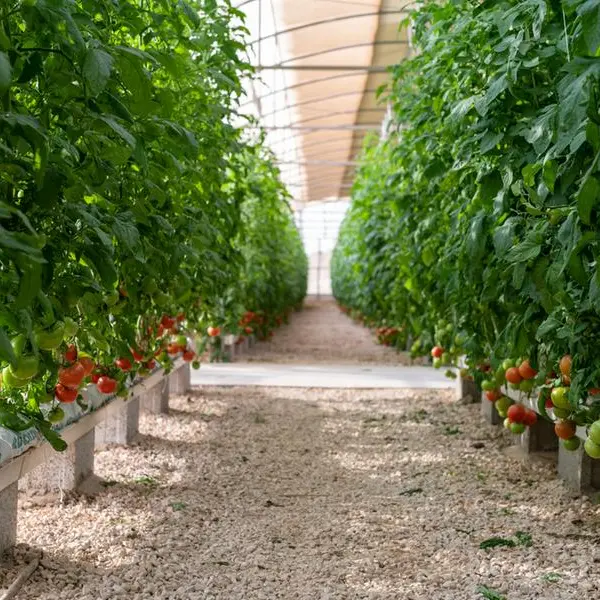PHOTO
The unprecedented pace at which the construction industry faced disruptions to the supply chain and workforce due to the pandemic is pushing companies and contractors to look at agile and flexible construction technologies with renewed vigour.
“The COVID 19 pandemic has accelerated an overdue transformation of the construction landscape,” said Riad Bsaibes, President and CEO, Amana Investments, alluding to a ‘paradigm shift’ in the construction ecosystem towards “agile and flexible construction methodologies.”
The pandemic has forced the construction industry to re-assess its halting pace of adaptation of innovative technologies.
“In a way, the pandemic was a blessing in disguise,” said Mitchel Hanna, Group General Manager at Speed House, while agreeing that the industry is opening up more towards offsite, modular construction model.
A Laing O’Rourke spokesperson said the company uses different technologies to complement mitigation measures against the current pandemic.
“Technology that is already embedded in the way we deliver our projects, such as digital engineering platforms, continue to deliver efficiencies,” said the spokesperson for the UK-headquartered construction and engineering company, which has a prominent presence in the Gulf region.
He said they had seen an increased uptake of offsite manufacture to reduce on-site attendance and maintain social distancing and reliance on virtual attendance of the client and design team for factory inspections and witnessing of factory performance tests.
“These approaches are becoming embedded in our way of working, and it will be interesting to measure how each approach continues in the future,” the spokesperson said.
Modular construction
Industry experts said uptake of offsite prefab methodologies is expected to grow as social distancing safety measures have forced companies to bring the workforce into a more controlled and, therefore, safer factory work environment.
With Amana’s Dubox instrumental in delivering the 2,000-square metre Qiddiya site offices 30 days ahead of a 180-day-schedule using modular manufacturing, Bsaibes emphasised that “modular solutions will further develop and gain traction across the region.”
Bsaibes’s group will be using modular technology for the Saudi Red Sea Development Company (TSRDC) to provide prefinished modular units as part of the Coastal Village initiative. The project will provide accommodation, office space, and supporting civil amenities to the 40,000 workers and staff that will work at the luxury tourism project.
Cost-effective
The offsite factory environment standardises work that has to pass through the QC processes for ensuring quality output at a greater speed in a cost-effective manner and a controlled, safe environment.
Bsaibes vouched for an 85 percent shift of the project work from the site to the factory, a 30 percent reduction of labour cost, and a 30 percent shortening of build time.
“These numbers are proven, not projected,” he affirmed.
Daniele Pfeffer, Director and part owner at Gulf Precast, had a similar take on the labour cost in prefab constructions.
“Typically, a precast project uses about 65 percent less workmanship on-site compared to traditional construction,” she said.
Besides, precast has application in all kinds of construction.
“The technology can be used for numerous types of structures, including residential, retail developments, offices and industrial buildings, bridges and tunnels,” she maintained.
Pfeffer enumerated the advantages of offsite prefab construction as “faster, high quality, durable, environment friendly and low maintenance with increased safety due to low interaction among fewer labourers.”
Beyond prefab technology
“Technologies which existed before the pandemic have seen a surge in its uptake and has quickly become a way of going to work,” said the Laing O’Rourke spokesperson, referring to collaborative tools including common access to cloud-based models.
“There has been an increase in the industry with the familiarity of design tools such as BIM, which has made it more common for simulators to be used by all stakeholders as a means of reviewing the design,” he said.
Cloud-based collaboration is imperative in the pandemic world, according to Douglas Sum, partner and co-owner of Heroes Architects and Engineers.
His company has laid claim to the most advanced façade modelling technology that allows architects to visualise and bring to life their vision by putting it in the cloud and letting the entire project team have access to see and suggest changes instantly.
Starting from the Opus in Downtown Dubai in 2012, Sum said they had been involved with many façade projects in the UAE and this region. “The most recent ones are the various Expo pavilions, Expo metro stations, Al Wasl Plaza, Address Sky View Hotel, and also One Za’abeel.”
Drone technology, too, has found many takers in the industry. Sum’s company is partnering with another company to use drones for site inspection and identify defects.
While the industry is taking these new technologies, experts said there is still room for faster adoption.
Hanna attributed this lag to people’s unwillingness to change, especially in a market like construction “where margins are too low to try and take a risk with something that one does not know much about.”
He said he would like to see the “initiative from the top-down, which is how everything in this world changes and not the other way round.”
“I believe that authorities and government bodies need to take the initiative in setting up new construction guidelines using such offsite, modular and offsite solutions,” he concluded.
(Reporting by SA Kader; Editing by Anoop Menon)
Disclaimer: This article is provided for informational purposes only. The content does not provide tax, legal or investment advice or opinion regarding the suitability, value or profitability of any particular security, portfolio or investment strategy. Read our full disclaimer policy here.
© ZAWYA 2021























